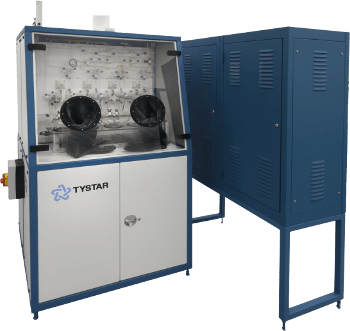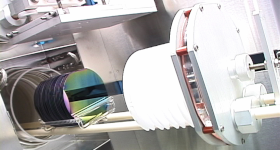Modified Chemical Vapor Deposition (MCVD)
There are a few manufacturing steps to the production of optical fibers. Modified Chemical Vapor Deposition (MCVD) is the very first step that involves torch heating and chemical vapor deposition. In a MCVD process, modifying vapor is generated in a bubbler containing silicon chloride (SiCl4) and germanium chloride (GeCl4) and possibly with a mix of other chemicals. Oxygen is the bubbling gas that is passed through the bubbling container. The vapor generated in the bubbler is delivered to the inside of a silica or quartz tube held on a lathe. While the lathe turns, a torch is traveled up and down the tube for even heat application. The delivered vapor then deposits(SiO2) and germanium dioxide (GeO2)and fuses together to form glass on the inner surface of the tube.
FVD 2000 controls the flow of gases with mass flow controllers, such as hydrogen, oxygen, helium and chlorine, as well as vapors of silicon-tetrachloride SiCl4 and germanium-tetrachloride GeCl4. Temperature controlled hydrogen torches provide the heat for the deposition of the silica films, and refill loops are incorporated to replenish the liquid source vaporizers. This equipment is generally custom designed to specific customer requirements, so we invite you to contact us for more information.
For more details of MCVD, please contact 7050 Lampson Avenue Garden Grove, CA 92841 | Tel: (310) 781-9219 or write to support@tystar.com



